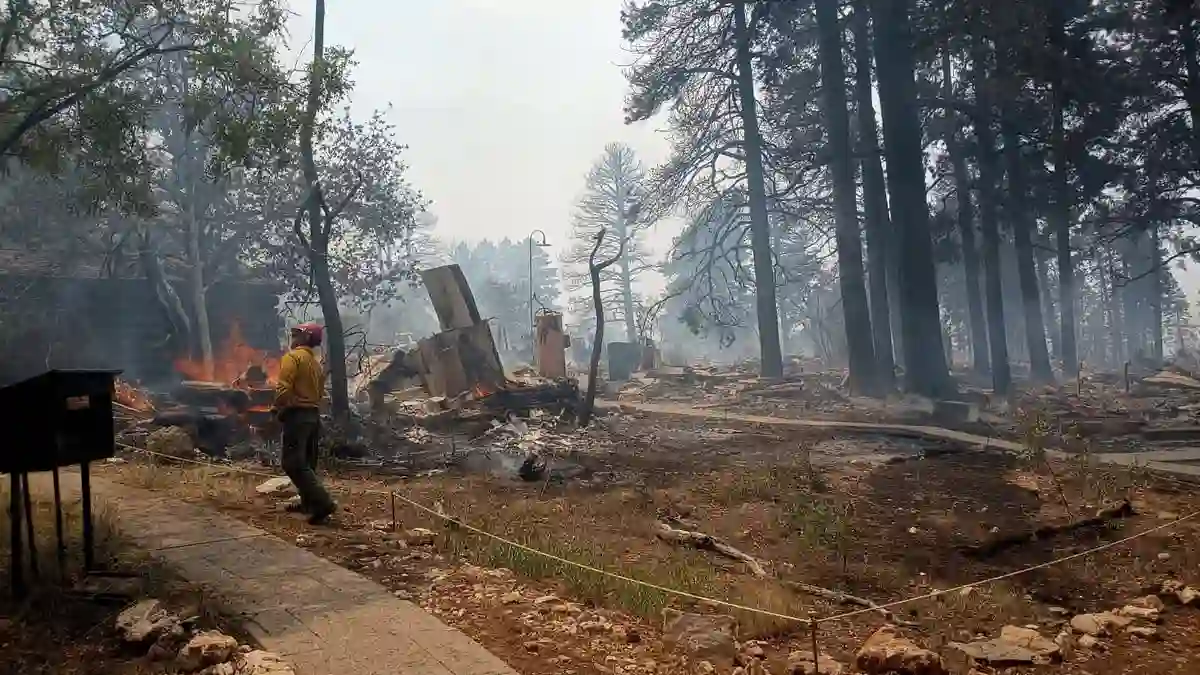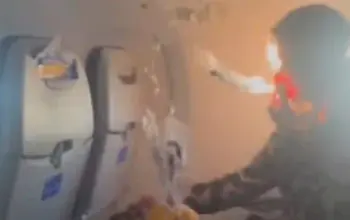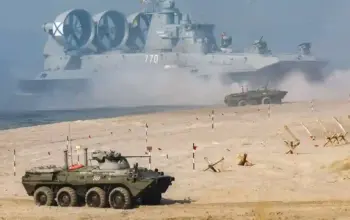What was supposed to be a bustling summer weekend at one of America’s most iconic destinations turned into a scene of devastation, as a raging wildfire tore through the North Rim of Arizona’s Grand Canyon National Park.
A Beloved Landmark Reduced to Rubble
The Grand Canyon Lodge—a cherished, nearly century-old site known for its rustic charm and sweeping views—has been largely destroyed by the fast-spreading Dragon Bravo Fire.
It was the only lodging facility on the park’s North Rim and was a key part of many visitors’ Grand Canyon experience.
According to park Superintendent Ed Keable, the fire reduced 50 to 80 structures to ash, including not just the main lodge, but also the visitor center, a gas station, employee housing, administrative offices, and even the park’s waste water treatment facility.
All Guests and Staff Safely Evacuated
Thankfully, all guests and employees were safely evacuated before the fire reached the lodge.
Aramark, the company that managed the site, said their hearts go out to everyone affected.
“We are devastated by the loss,” said Aramark spokesperson Debbie Albert.
“This place wasn’t just a lodge—it was a piece of American history.”
Built in 1928, the lodge was considered a historical landmark, beloved not only for its architecture but for its emotional pull—it was the first sight many visitors saw before taking in the breathtaking canyon itself.
Locals Mourn a Piece of the Past
Tim Allen, a Flagstaff resident who has visited the lodge often, shared his sadness.
“Walking through that lodge felt like stepping into the past.
Like you were a pioneer. It’s truly heartbreaking to see it gone.”
Two Wildfires Bring Chaos to Arizona
This fire didn’t happen in isolation. The Dragon Bravo Fire is one of two major blazes scorching the region.
Nearby, the White Sage Fire in Kaibab National Forest has already burned over 20,000 acres since it started on July 9. It remains completely uncontained.
Together, the two fires have forced the evacuation of hundreds of residents and park visitors.
Roads are closed. Trails are off-limits. And thick black smoke has blanketed large areas of the Midwest, sparking fear and confusion.
Dangerous Gas Leak Adds to the Crisis
As if flames weren’t enough, the Dragon Bravo Fire triggered a toxic chlorine gas leak when it engulfed the park’s water treatment plant on Saturday afternoon.
Officials rushed to evacuate firefighters and hikers from the North Rim as the gas, which is heavier than air, posed a major risk—especially in the canyon’s lower areas where it can settle.
The Park Service confirmed that river rafters and hikers in the inner canyon were quickly moved to safety.
The North Rim, North Kaibab Trail, South Kaibab Trail, and Phantom Ranch remain closed until further notice. The South Rim, however, is still open.
Wildfires Believed to Be Lightning-Caused
Both fires are believed to have been sparked by lightning during recent thunderstorms, according to the US Forest Service.
Unfortunately, Arizona’s dry summer conditions have allowed the fires to spread quickly.
Coconino County issued widespread evacuation orders, including for the area surrounding Jacob Lake and large parts of the Grand Canyon’s North Rim.
Nearly 500 visitors were safely evacuated on Friday alone.
Smoke Blankets the Midwest and Prompts Health Warnings
Meanwhile, smoke from both Arizona and Canadian wildfires has drifted far and wide, covering states like Montana, North Dakota, Wisconsin, and most of Minnesota.
The EPA warned that air quality levels have dropped to “unhealthy” in many of those areas.
Locals are being urged to take health precautions: stay indoors, keep windows shut, and run air purifiers if available.
Those with asthma, lung conditions, or the elderly are especially at risk.
Rising Heat Intensifies the Danger
Adding another layer to the crisis, temperatures are expected to rise well above 110°F in parts of the Grand Canyon over the next few days.
Combined with poor air quality and ongoing fires, the National Weather Service has warned people not to underestimate the risks.
“There’s not just extreme heat—there’s smoke and serious fire danger too,” NWS Flagstaff stated. “Don’t mess around.”
Tragedy Amid the Flames
Sadly, the fire and heat have already claimed a life.
A 67-year-old man died while hiking in the Grand Canyon last week, underscoring just how dangerous conditions have become.
More than 200 firefighters and emergency workers are on the ground battling the flames.
But with the gas leak and unpredictable winds, progress is slow.
The Road Ahead
While the full scale of damage is still being assessed, one thing is certain—rebuilding what’s been lost will take time, resources, and the support of countless people.
For now, the focus remains on containment, public safety, and finding a way forward after losing such a powerful piece of the Grand Canyon’s story.



